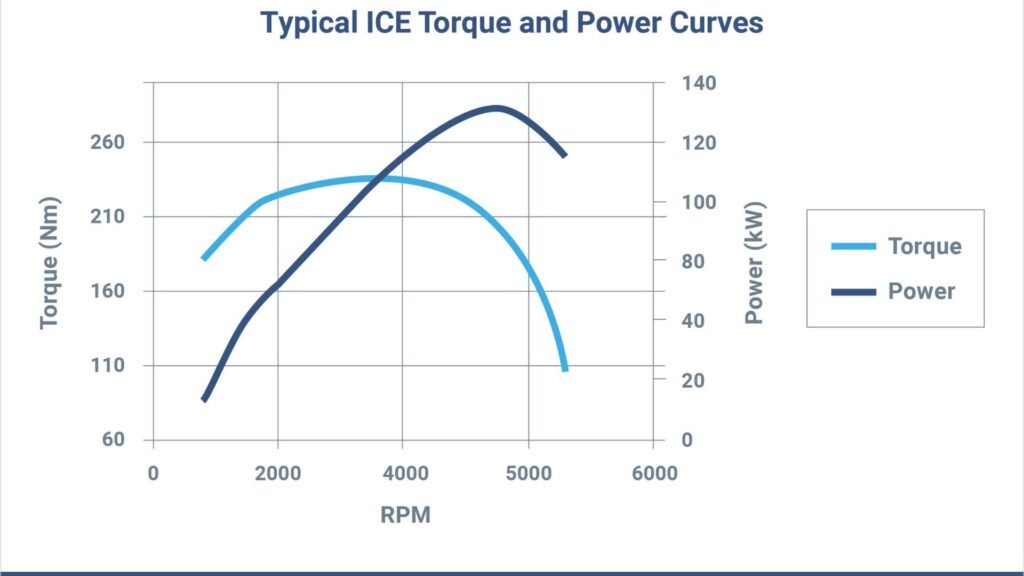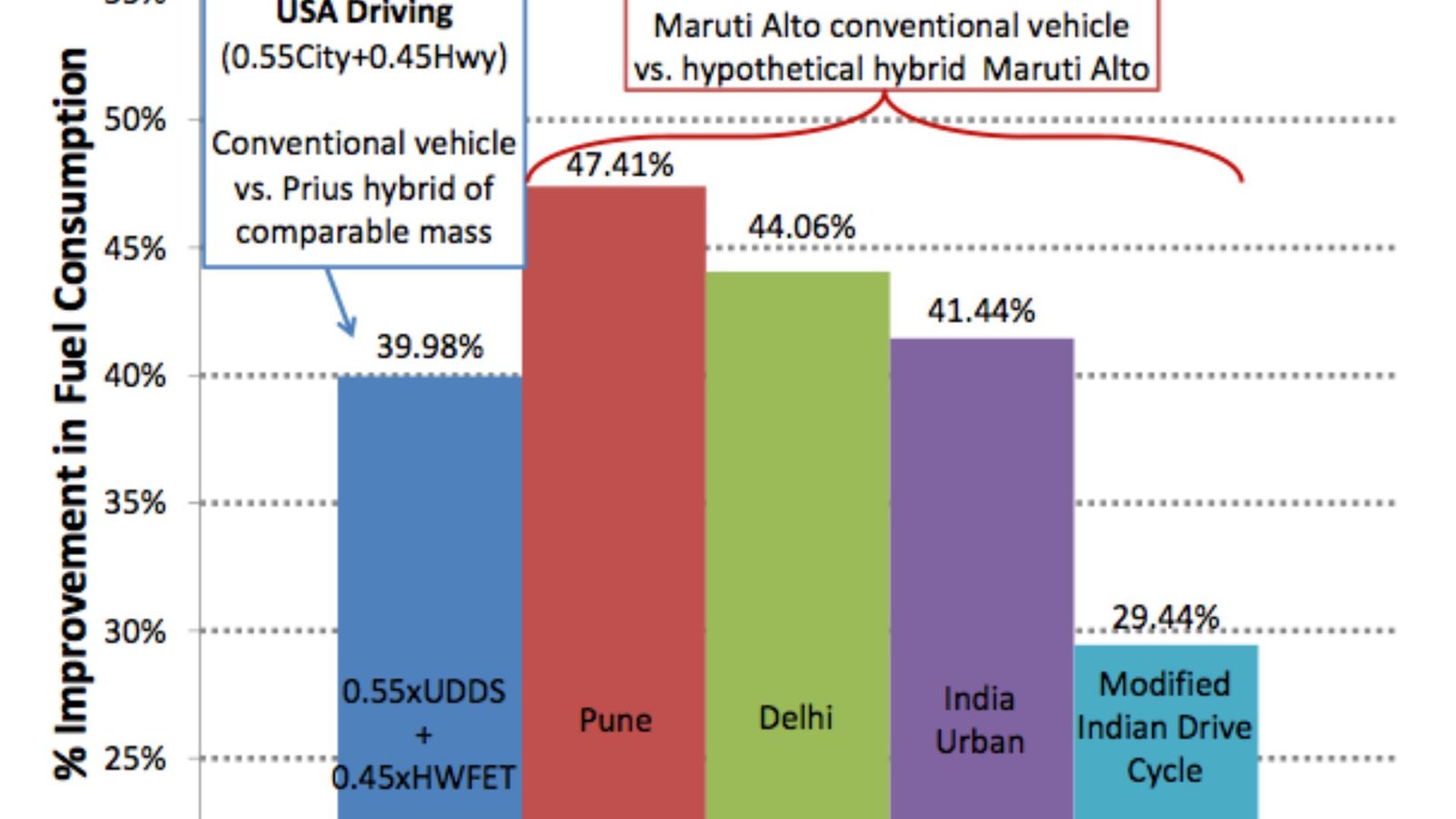Gains in Hybrid Vehicles Fuel Efficiency
Hybrid vehicles have revolutionized the automotive industry with their remarkable fuel efficiency. By combining traditional internal combustion engines (ICE) with electric propulsion, hybrids offer significant gains in fuel economy compared to conventional vehicles. In this post, we’ll explore the technologies and strategies that contribute to the impressive fuel efficiency of modern hybrid vehicles.

1. The Role of Regenerative Braking
Capturing Kinetic Energy
Regenerative braking is a key technology that enhances fuel efficiency in hybrid vehicles. Unlike traditional braking systems that dissipate energy as heat, regenerative braking captures and converts the kinetic energy generated during braking into electrical energy. This energy is then stored in the battery for later use.
Reducing Energy Waste
By recovering energy that would otherwise be wasted, regenerative braking helps reduce the load on the internal combustion engine. This leads to better fuel efficiency, especially in stop-and-go traffic where frequent braking occurs. The ability to harness and reuse this energy makes hybrid vehicles more efficient overall.
2. Advanced Battery Technology
High-Energy Density Batteries
Hybrid vehicles use advanced battery technologies to store and manage electrical energy. Modern hybrids typically employ lithium-ion batteries, which offer higher energy density and longer lifespans compared to older nickel-metal hydride (NiMH) batteries. These improvements allow hybrids to store more energy and provide better performance.
Battery Management Systems
Sophisticated battery management systems also play a crucial role in fuel efficiency. These systems monitor and optimize battery performance, ensuring that energy is used efficiently and prolonging the battery’s life. By maintaining optimal battery health, hybrids can achieve greater fuel economy and reliable performance.
3. Intelligent Energy Management
Optimizing Power Distribution
Intelligent energy management systems are integral to the fuel efficiency of hybrid vehicles. These systems use advanced algorithms to monitor driving conditions, battery levels, and energy consumption. They then optimize the interaction between the electric motor and the internal combustion engine to provide the best possible fuel efficiency.
Adaptive Driving Modes
Many hybrid vehicles feature adaptive driving modes that adjust power distribution based on driving conditions. For instance, the system may prioritize electric power in low-speed or urban driving conditions and switch to the internal combustion engine for highway driving. This dynamic management ensures that the vehicle operates efficiently under varying conditions.
4. Aerodynamic Enhancements
Streamlined Design
Aerodynamics significantly impact a vehicle’s fuel efficiency, and hybrid vehicles often incorporate advanced aerodynamic designs to reduce drag. Features such as active grille shutters, rear spoilers, and underbody panels help streamline airflow around the vehicle, reducing resistance and improving overall efficiency.
Reducing Wind Resistance
By optimizing aerodynamic design, manufacturers can enhance the performance of hybrid vehicles, allowing them to achieve better fuel economy and higher speeds. Improved aerodynamics help reduce wind resistance, making the vehicle more efficient and reducing the energy required to maintain speed.
5. Lightweight Materials
Reducing Vehicle Weight
Another important factor in fuel efficiency is the vehicle’s weight. Hybrid vehicles often use lightweight materials such as carbon fiber, aluminum, and high-strength steel to reduce overall weight. Lighter vehicles require less energy to move, which translates to improved fuel efficiency.
Balancing Performance and Efficiency
While lightweight materials help offset the added weight of hybrid batteries and electric motors, manufacturers must balance performance and efficiency. Advanced engineering techniques ensure that the vehicle remains agile and responsive while maximizing fuel economy.
6. Efficient Engine Technology
Optimized Engine Performance
Modern hybrid vehicles use advanced engine technologies to enhance fuel efficiency. These include variable valve timing, turbocharging, and direct fuel injection, which improve engine performance and fuel economy. By optimizing engine operation, hybrids can achieve higher fuel efficiency and better overall performance.
Engine Downsizing
Hybrid vehicles often use smaller, more efficient engines compared to traditional vehicles. Engine downsizing reduces fuel consumption while still providing adequate power for driving. This approach helps improve fuel efficiency without compromising the vehicle’s performance.
7. Enhanced Transmission Systems
Continuously Variable Transmissions (CVTs)
Many hybrid vehicles feature continuously variable transmissions (CVTs), which offer smooth and efficient power delivery. Unlike traditional automatic transmissions with fixed gear ratios, CVTs provide an infinite range of gear ratios, allowing the engine to operate at its most efficient speed.
Improving Fuel Economy
By continuously adjusting gear ratios based on driving conditions, CVTs help optimize fuel efficiency and performance. This results in smoother acceleration and better fuel economy, making CVTs a popular choice for hybrid vehicles.
Conclusion
In summary, hybrid vehicles achieve impressive gains in fuel efficiency through a combination of advanced technologies and strategies. Regenerative braking, advanced battery technology, intelligent energy management, aerodynamic enhancements, lightweight materials, efficient engine technology, and enhanced transmission systems all contribute to the overall fuel economy of modern hybrids. These innovations work together to make hybrid vehicles a practical and eco-friendly choice for drivers seeking to reduce fuel consumption and lower their environmental impact. By understanding these factors, you can appreciate the remarkable efficiency of hybrid vehicles and make informed decisions about your next vehicle purchase.

